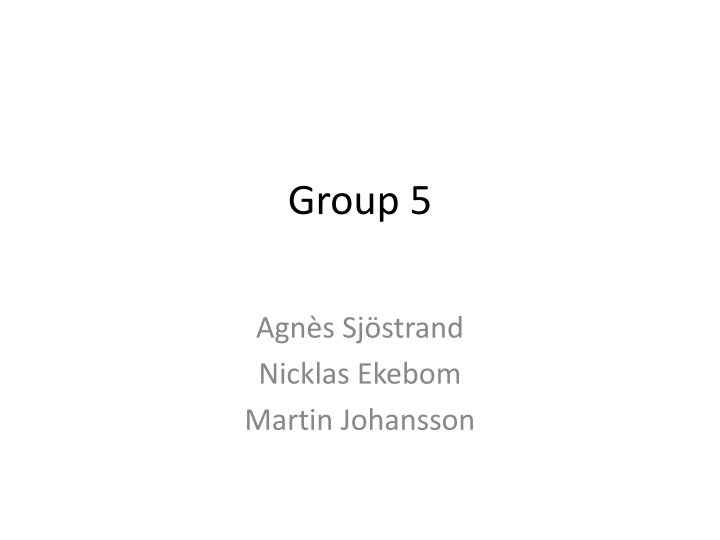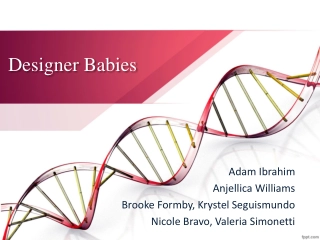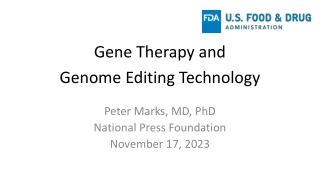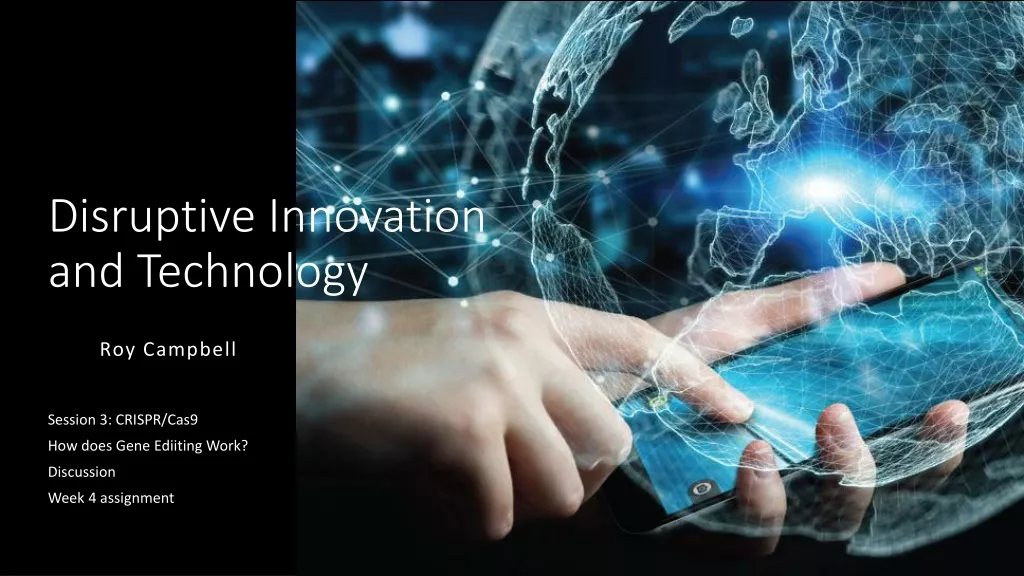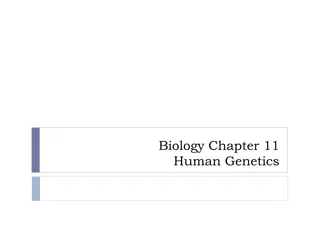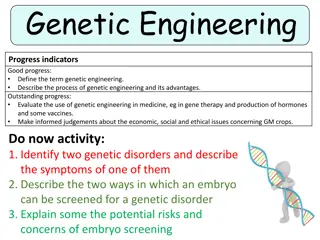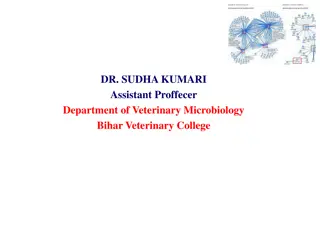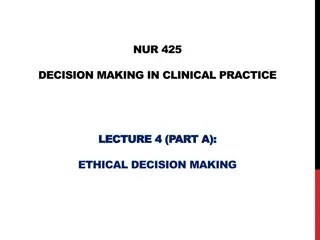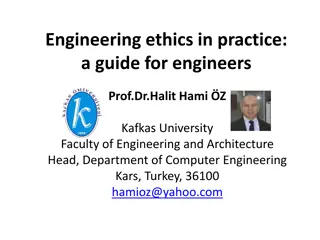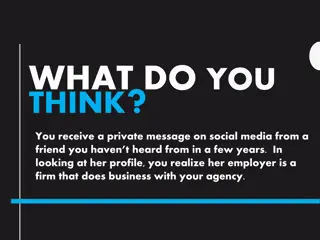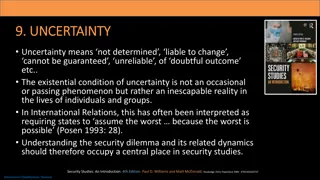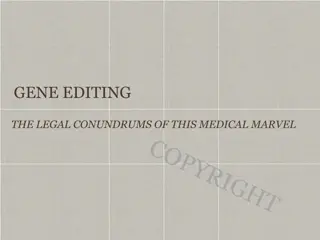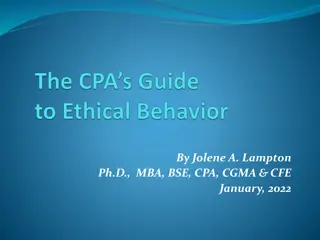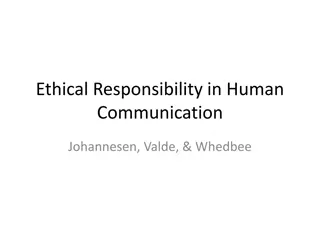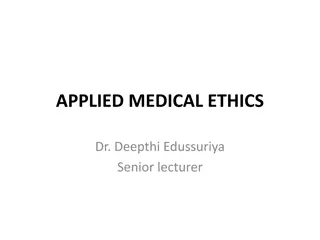Ethical Dilemma: Genetic Editing and Societal Implications
A company has developed a service to modify genetic sequences in human embryos to reduce the risk of diseases like Schizophrenia, Bipolar Disorder, Autism, and Alzheimer's. This technology raises concerns about societal conflicts, ethical issues, and potential discrimination. Alternative methods and stakeholder decision-making processes are also explored in this thought-provoking discussion.
Download Presentation

Please find below an Image/Link to download the presentation.
The content on the website is provided AS IS for your information and personal use only. It may not be sold, licensed, or shared on other websites without obtaining consent from the author.If you encounter any issues during the download, it is possible that the publisher has removed the file from their server.
You are allowed to download the files provided on this website for personal or commercial use, subject to the condition that they are used lawfully. All files are the property of their respective owners.
The content on the website is provided AS IS for your information and personal use only. It may not be sold, licensed, or shared on other websites without obtaining consent from the author.
E N D
Presentation Transcript
Group 5 Agn s Sj strand Nicklas Ekebom Martin Johansson
Presentation of technology A company has developed a service which will modify the genetic sequence of the fertilized human embryo. The service aims to change disease associated alleles and thereby decrease the genetic risk associated with development of Schizophrenia, Bipolar Disorder, Autism and Alzheimer s disease.
Groups concerned + conflicts they will have Group1 Group2 Conflict Society Parents Parents can endure social pressure Child Parents Question their decision they made for him/her Parents Parents Two groups would raise within parents: the ones that agree and the ones that don t Health system Parents Everyone Increased costs for non-users Pressure to use the technology Social Classes Social Classes Whelthy vs non-wealthy Carriers Society Discrimination
Ethical problem led by the technology Will non-users still be covered by healthcare? Would they have increased insurance costs? International laws: what would be the rights of people that have gone through this technology abroad (family, children...)? What is the ethical state of the foetus? Disease carriers would be discriminated against Unknown consequences and risks for society, health, biodiversity, resistance to epidemics.
Alternative methods Improve the medicines and facilities for sick persons genetic therapy, using viral transfections targeting the cells affected. Use of stem cells to decrease the symptoms Problems of the alternative methods Medicine and facilities for sick people: park off sick people so we don't have to see them, medicine to avoid disease effects on the society (chemical straitjacket) rather than for the well-being of the patient Genetic therapy and stem cells: would be better but we don't know the risks, especially cancers! Lot of side effects during the treatment.
Stake holders and decision making First step: contact researchers to evaluate the risks and whether it would be feasible in the society. Perform surveys to see whether the population would be ready or agree to such technology Society: Shall we vote or make a referendum for such a technology? Foetus: cannot be asked, has no choice
Values: health family society: better functioning for all Interest: for insurances and healthcare: less costs (less medicine, fewer employees, less facilities) families: less family troubles, less sadness Duties: information for families, objective keep facilities and medicines so that people can have the choice System permitting parents to make the decision anonymously Prevent stigmatization of people that haven't been through the technology
Effects, risks and resolving conflicts On health improve it on the short-term BUT: we don't know all the consequences (other diseases, character) loss of diversity: what happens in case of an epidemics On families: There will be differences between the families that used the technology and the ones that didn't Non-users will go through social pressure, may feel guilty, the healthcare may be less prone the help them Other solutions: Medicine and facilities for sick people: park of sick people so we don't have to see them, medicine to avoid disease effects on the society (chemical straitjacket) rather than for the well-being of the patient Genetic therapy: would be better but we don't know the risks, especially cancers! It is a harder treatment to go through physically.
Optimization of use of technology Access for everyone, to deal with the equality Give it a place in the international laws. Use of the technology: Restrict its use to disease and nothing else. Broaden its use to other diseases only once the consequences on neurological diseases have been evaluated. Restrict its use to disease that can't be cured by medicines. Protect the families that made the choice not to go through the technology. So that it can remain a choice.
State of the art today 23 and Me Ancestry GWAS Studies Personalized Medicine Intresting sources for reflection Welcome to GATTACA 1997, 2008 Robert Sapolsky The Baboon troop The hunt for the superhuman Research at Beijing Genomic Institute
